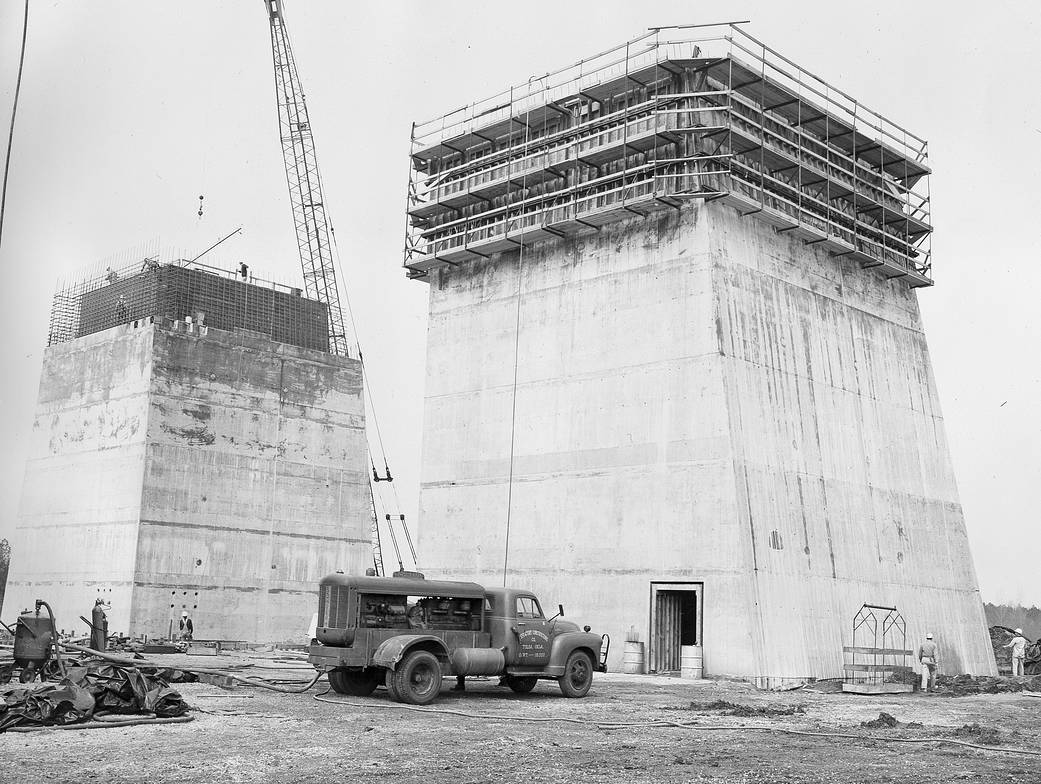
The S-1C static test stand at Marshall Space Flight Center in Huntsville, Ala. was constructed to develop and test the 138-foot long and 33-foot diameter Saturn V S-IC, booster stage. This photograph taken March 29, 1963, gives a close up look at two of the ever-growing four towers of the S-1C test stand. Workers used hundreds of tons of steel and 12 million pounds of cement to build the massive edifice consisting of foundation walls four-feet thick and plunging 40 feet below ground. The stand had to be strong to support the firing of all five F-1 engines that generated 7.5 million pounds of thrust.
The four vertical towers, like the two-partially constructed ones shown here, had 40-foot-thick walls soaring 144 feet upwards. When a crane with a 135-foot boom was added and moved to an upright position, the structure’s overall height soared to 405 feet, a height that, at the time of completion, made it the highest structure in Alabama. In 1974, NASA modified the stand to add a liquid hydrogen capability for testing liquid hydrogen tankage on the Space Shuttle external tank; these tests were completed in 1980. In 1986, NASA modified the facility and changed the name to the Advanced Engine Test Facility.Image credit: NASA/MSFC



























